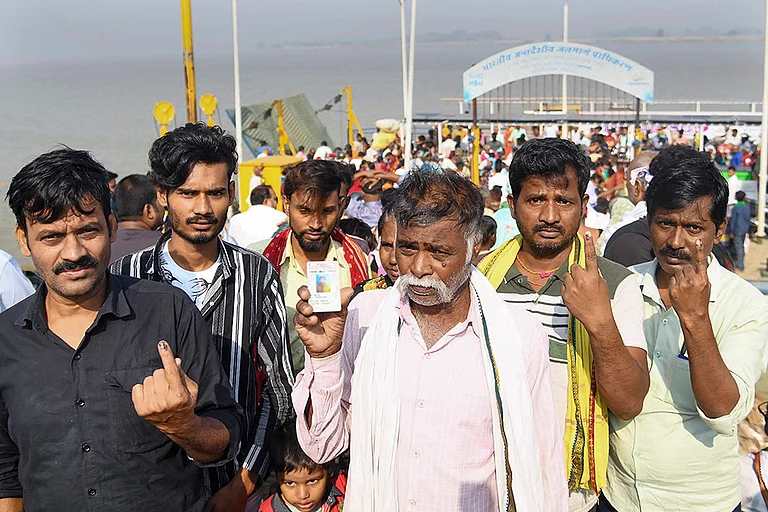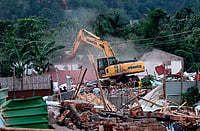The first phase of the 2024 Lok Sabha elections is done and dusted with voters from 21 states and Union Territories, spanning 102 constituencies, having exercised their democratic right to vote.
Lakshadweep had the highest percentage of voters hitting the booths at 83.88 per cent, followed by West Bengal at 81.91 and Tripura at 81.62 per cent, while Bihar remained low at 48.88 per cent.
With the conclusion of the initial phase of elections in the world’s largest democracy, Outlook analyses voter trends, mapping how voter activity has changed since the previous 2019 polls.
Decline in voter turnout
In 2019, the phase one of the general elections which saw voting in 91 constituencies the average turnout was recorded at 69.43 per cent. However, figures from Friday's polling indicate a slight decrease to 68.31 per cent.
Several constituencies have shown a decline in voter turnout compared to their 2019 figures. Even the constituencies with the highest voting turnout have suffered a setback compared to their previous performance.
On Friday, the Lakshadweep constituency recorded the highest percentage of votes cast at 83.88 per cent. While this is the highest among the 102 constituencies, it has decreased from its 2019 turnout of 85.21 per cent.
Similarly, West Bengal’s Jalpaiguri went from 86.51 to 83.66 per cent and Cooch Behar from 84.08 to 82.17 per cent. In the northeastern region, Tripura’s turnout also dropped from 81.93 to 81.62 and Sikkim from 81.41 to 80.03.
Arunachal Pradesh East saw a dramatic decrease from 87.03 to 76.37 per cent which could be attributed to violence reported in certain parts of Arunachal Pradesh. Similarly, in Manipur, both constituencies witnessed a decline, with the average voter turnout decreasing from 82.69 per cent to 70.63 per cent.
Mizoram's voter turnout of 56.60 per cent was the lowest among northeastern states, marking a decline from its 2019 turnout of 63.14 per cent.
While in Nagaland, over four lakh voters boycotted the elections due to the Eastern Nagaland People's Organisation (ENPO)’s long-standing demand for a separate zone with greater autonomy. This led to a significant drop in voter turnout from 83 per cent in 2019 to 56.91 per cent this time.
Tamil Nadu and Uttarakahnd, states with all seats going to polls in the first phase, also witnessed a decline in voter percentage as compared to their 2019 performance. Tamil Nadu with its 39 seats, went from an average turnout of 72.44 to 69.76 per cent. Uttarakhand went from 59.21 to 54.81 per cent.
All four constituencies of Bihar, all six of Madhya Pradesh, all eight of Uttar Pradesh, all 12 of Rajasthan, all three of West Bengal, all five of Uttarakhand and four out of five of Maharashtra have witnessed a downward trend in voter turnout as compared to their 2019 performance.
Constituencies with higher turnout
A northeastern state which actually improved its 2019 performance was Meghalaya with turnout rising from 71.43 to 75.28 per cent.
While most Tamil Nadu constituencies saw a decline in voter percentage some constituencies improved on their 2019 performance. The constituencies included Coimbatore, Kallakurichi, Salem and Vellore.
Maharashtra’s Chandrapur, Assam’s Jorhat and Chhattisgarh’s Bastar were some other constituencies to record an increased turnout on Friday.
About 56 villages in Bastar had a polling booth set up for the first time in their villages which could be attributed to its increased turnout.


























